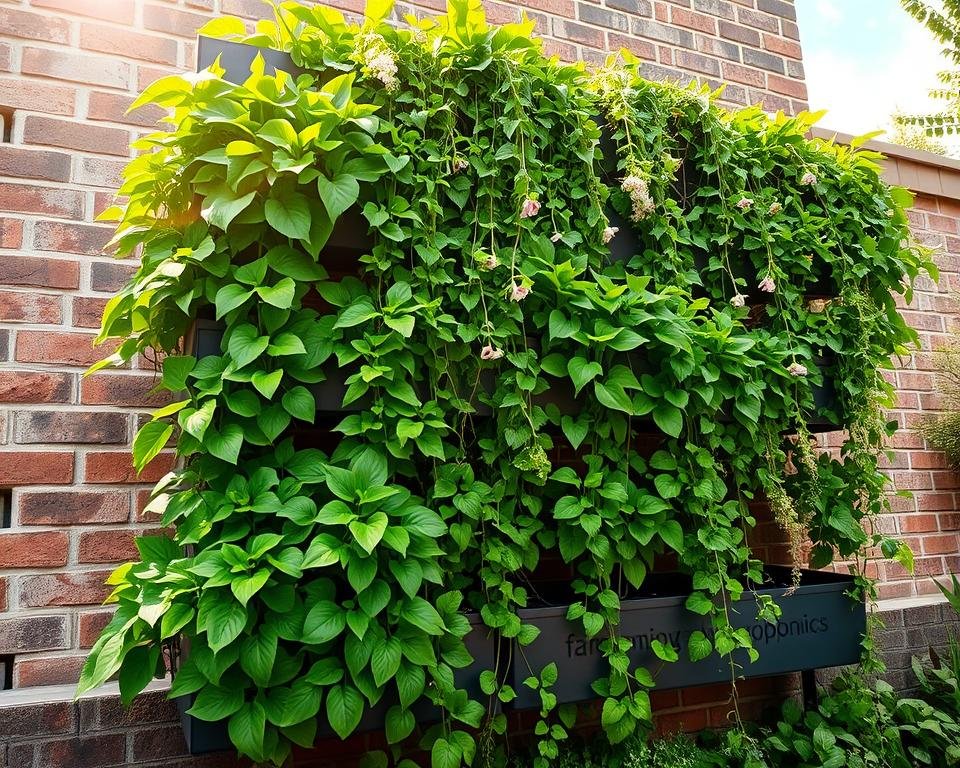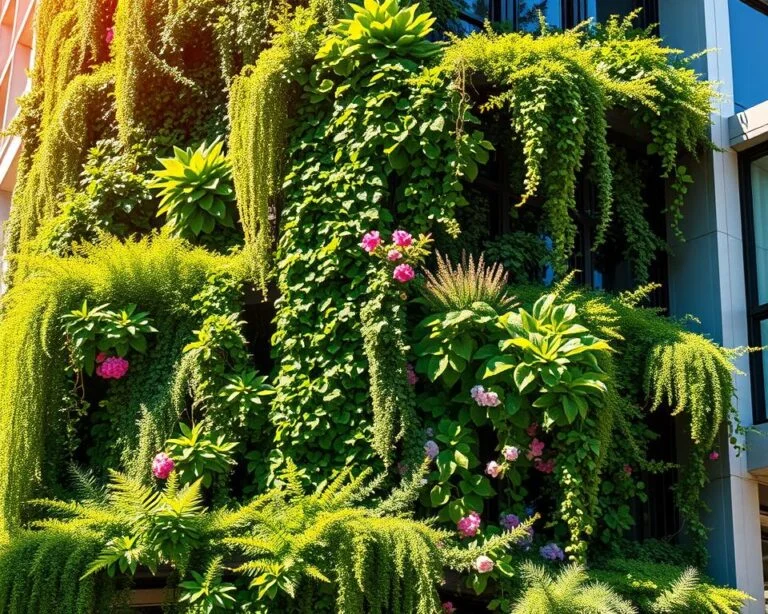Garden Planning for Vertical Gardens: Concept to Creation
Imagine transforming a tiny balcony or narrow city corner into a lush garden that grows upward instead of outward. Effective garden planning makes vertical gardening more than a trend—it’s a smart, space‑saving way to cultivate fresh food and vibrant greenery in tight urban settings.
City dwellers are embracing the idea of growing up rather than out. Innovative systems like the Garden Tower Project allow you to cultivate up to 50 plants in just four square feet, proving that strategic garden planning can turn even the smallest spaces into thriving mini‑farms.
Vertical gardening isn’t only about saving space; it’s also about boosting sustainability and reconnecting with your food. Whether you’re an experienced gardener or a complete beginner, good garden planning lets you design, build, and maintain a living wall that brings life—and fresh produce—to any urban environment.
Key Takeaways
- Vertical gardens can produce up to 50 plants in minimal space
- Perfect solution for urban dwellers with limited gardening areas
- Offers flexibility in garden design and plant selection
- Cost-effective alternative to traditional gardening
- Provides opportunities for food independence
- Reduces water usage through efficient vertical systems
Understanding Vertical Gardens: A Space-Saving Solution
Vertical gardening has changed the game for city folks and space-challenged gardeners. It turns walls and blank spaces into green oases. This way, you can grow more in less space.
Vertical gardens are perfect for those who want to show off their green thumb. They’re great for growing veggies or flowers, even in tight spots. These systems make gardening in small areas easy and stylish.
Types of Vertical Garden Systems
There are many ways to go vertical:
- Hanging basket systems
- Modular wall-mounted planters
- Trellis and climbing plant structures
- Hydroponic vertical growing systems
- Freestanding vertical garden units
Benefits of Growing Vertically
“Vertical gardening transforms limited spaces into green sanctuaries of productivity and beauty.”
Vertical gardening does more than save space:
- Maximizes limited outdoor and indoor spaces
- Improves air quality
- Reduces environmental noise
- Enhances aesthetic appeal
- Allows for creative landscaping design
Key Components of a Living Wall
Building a vertical garden needs planning. Key parts include:
- Sturdy support structure
- Appropriate growing medium
- Efficient irrigation system
- Carefully selected plant varieties
- Proper drainage mechanisms
Vertical gardens can be set up in just one hour. They offer a fresh take on gardening.
Garden Planning: Essential Steps for Success
Starting a vertical garden needs careful planning. Your outdoor areas can turn into lively, fruitful gardens with the right plan. Before starting, make a detailed strategy to use your space well.
First, look at the space you have and what you want to achieve. Think about these key points:
- Check how much sunlight your area gets (aim for at least 8 hours of direct sun)
- Figure out how you’ll water your garden
- Make sure your structure can hold the weight
- Choose the right tools for vertical gardening
Soil is key for a successful vertical garden. Unlike regular gardens, vertical ones need special soil. This soil should drain well and hold nutrients. PlanMyGarden suggests making a light, draining mix that helps plants grow without stressing the structure.
| Planning Consideration | Recommended Strategy |
|---|---|
| Garden Bed Width | Maximum 4 feet (1.2 meters) |
| Sunlight Requirement | Minimum 5 hours for staple crops |
| Crop Placement | Avoid shading sensitive plants |
Pro tip: Group plants with similar needs together. This makes caring for your garden easier and boosts its productivity. With good planning, your vertical garden will flourish, making the most of your outdoor space.
Selecting the Perfect Location and Support Structure
Starting a vertical garden needs careful planning and the right location. It’s important to know about plant selection, garden layout, and sustainable gardening. These factors affect your garden’s success.
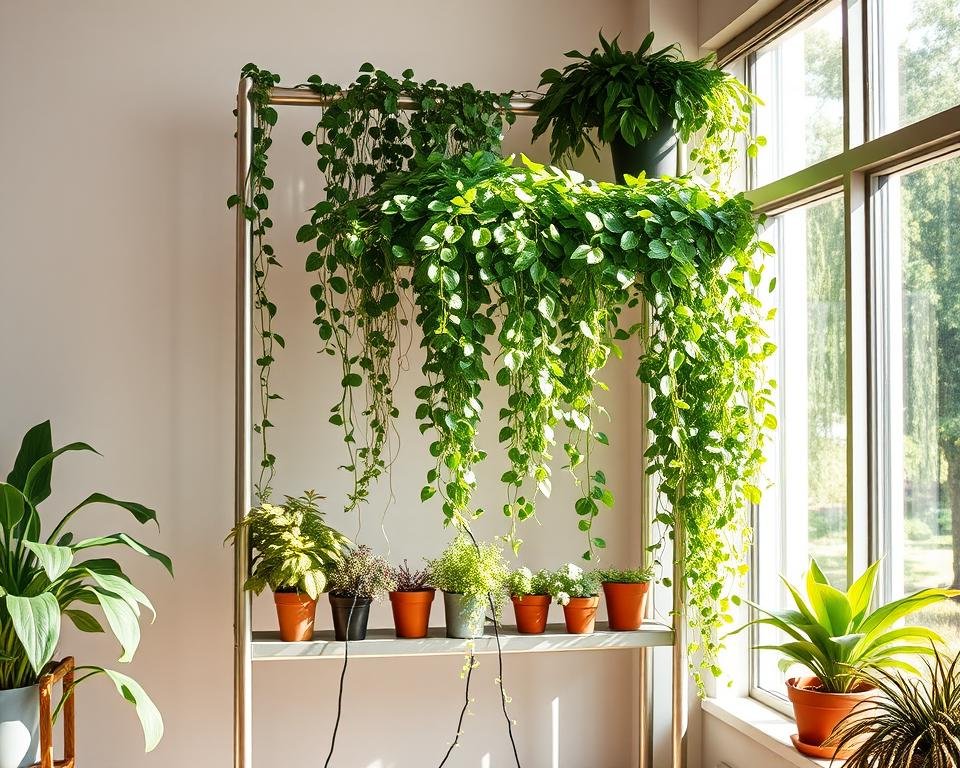
When picking a spot, consider a few key things. Vegetables need at least 6 hours of sunlight a day to grow well. Look at these important points:
- Wall structural integrity
- Moisture resistance
- Weight-bearing capacity
- Accessibility for maintenance
Wall Assessment and Preparation
Check the wall before you start. Make sure it can hold the weight of soil, plants, and water systems. Waterproof membranes might be needed to keep the wall dry.
Lighting Requirements
Light is vital for plants. South-facing walls get the most sunlight. If your area is dark, think about using grow lights for your garden.
Support System Options
Choose a support that fits your space and gardening needs. Here are some good choices:
- Pocket planters
- Modular panel systems
- Freestanding vertical frames
- Hanging basket configurations
For small gardens, use compact crops like bush beans. Make sure each plant has enough space and support for its growth.
Soil Selection and Preparation Techniques
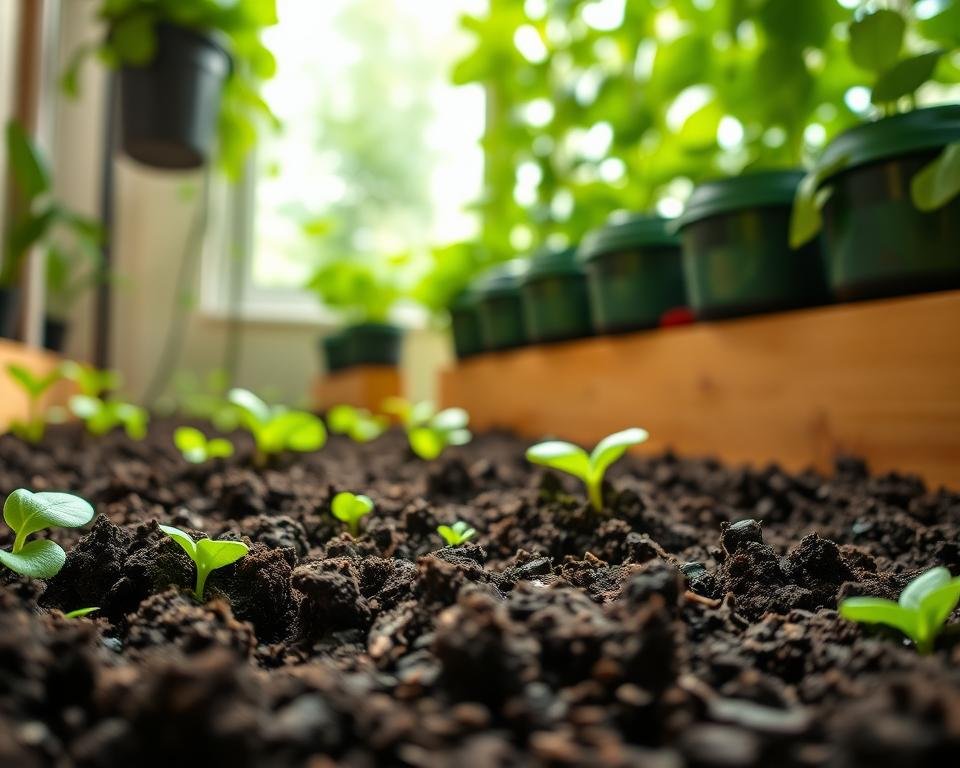
Creating the perfect soil mix is key for sustainable gardening in vertical gardens. Your soil preparation can make or break your living wall’s success. Vertical gardens need special soil attention, unlike traditional gardening.
When picking soil for your vertical garden, remember these important points:
- Choose high-quality potting mix for container gardening
- Add perlite or vermiculite for better aeration
- Target a soil pH of 6.0 to 7.0
- Make sure it holds water well but drains excess
Soil testing is vital in preparation. Knowing your soil’s nutrient levels helps you make a custom mix. The aim is to create a light, nutrient-rich mix for vertical plants.
| Soil Type | Organic Matter Recommendation | Preparation Technique |
|---|---|---|
| Sandy Soil | 3-4 inches of compost | Improve moisture retention |
| Clay Soil | 3-4 inches of compost | Enhance drainage and texture |
| Loamy Soil | 2-3 inches of organic matter | Maintain balanced structure |
Your vertical garden’s success relies on careful soil preparation. Mix in organic parts, keep nutrients balanced, and make a soil mix that supports plant growth. This promotes sustainable gardening.
Plant Selection and Design Strategy
Creating a vertical garden needs careful plant selection. It’s about finding the right mix of beauty and function. Your vertical garden can turn blank walls into lively spaces. It can show off the charm of both vegetable gardens and flower beds.
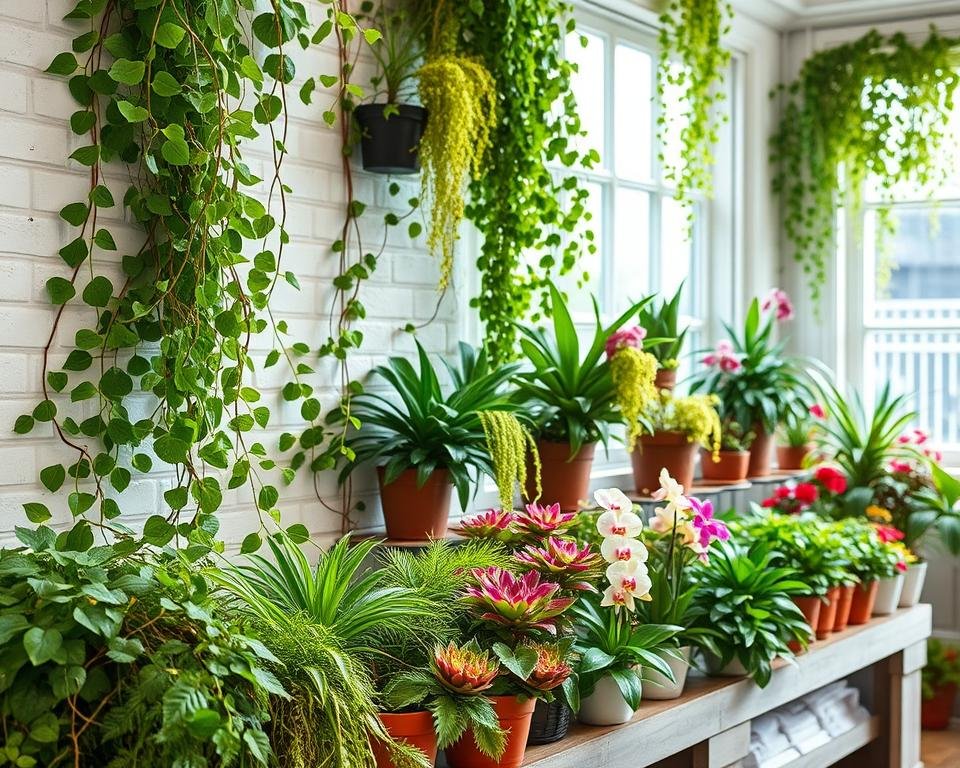
Best Plants for Vertical Gardens
Choosing the right plants is key for a thriving vertical garden. Here are some top picks:
- Vegetables: Peppers, tomatoes, lettuce, Swiss chard
- Herbs: Basil, oregano, rosemary, cilantro
- Ornamental Plants: Succulents, ferns, trailing vines
Creating Visual Interest
Your vertical garden should be a lively mix of textures and colors. Use different plants to add depth and visual complexity. Pair trailing plants with compact ones to make your living wall interesting and dimensional.
| Plant Category | Best Vertical Garden Options | Growth Characteristics |
|---|---|---|
| Vegetables | Cherry tomatoes, compact peppers | Compact, productive |
| Herbs | Basil, thyme, mint | Compact, aromatic |
| Ornamental | Succulents, trailing ivy | Low maintenance, diverse textures |
Seasonal Planning
Plan your vertical garden with the seasons in mind. Pick plants that keep interest all year, changing with the seasons. This way, your garden stays fresh and exciting all year long.
Irrigation and Maintenance Systems
Creating an effective irrigation strategy is key for sustainable gardening in your vertical garden. Drip irrigation systems are a top choice for keeping plants healthy while saving water. They deliver water right to the roots, cutting down on waste and keeping moisture just right.
Using efficient watering techniques can really boost your gardening tools’ performance. Here are some important irrigation strategies to consider:
- Install drip irrigation systems with 90% water efficiency
- Use timers to automate watering schedules
- Adjust watering frequency based on weather conditions
- Monitor water pressure between 25-30 PSI
Raised vertical gardens dry out faster because of quicker moisture loss. Smart irrigation can cut water use by 30-50% compared to old methods.
| Irrigation Method | Water Efficiency | Recommended Use |
|---|---|---|
| Drip Irrigation | 90% | Small to medium vertical gardens |
| Soaker Hoses | 75% | Large vertical garden spaces |
| Manual Watering | 60% | Small gardens with limited plants |
Sustainable gardening is more than just water management. Keeping your irrigation system clean and working well is crucial. Check emitters, clean filters, and watch water flow to keep your garden healthy.
By using these irrigation tips, you’ll have a water-saving, easy-to-care-for vertical garden. It will help your plants thrive and save water.
Creative Design Elements and Aesthetics
Your vertical garden is more than plants—it’s a canvas of design and beauty. It can turn an ordinary wall into a stunning piece of art. This art reflects your style and makes your outdoor space better.
Color is key in landscaping design. Choosing plants with the right colors can make your garden pop. Warm colors like reds and oranges can add energy. Cool colors like blues and purples bring calm.
Texture adds depth to your garden. Mixing different plants creates a rich look. Combining big, shiny leaves with small, soft ones adds interest. This makes your garden feel alive and natural.
Your vertical garden shows your creativity. Add things like unique planters and lights to make it stand out. Seeing your garden as a changing art piece will make it a source of joy and inspiration.

